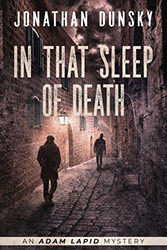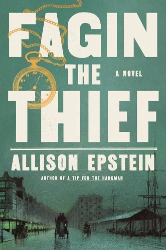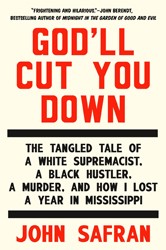What to do with a no-goodnik from London’s East End?
Murder in Constantinople’s bull-headed protagonist, Ben Canaan. is a man in his early twenties in 1854, living under his father’s roof with his extended family, working as an apprentice in his father’s tailor shop. He’s the kind of guy who always finds himself in trouble, and not too long after the novel opens, he’s in trouble once more: he gets caught trying to steal during a ball for London’s upper-crust. In his escape from the police, Canaan boards a ship headed for Constantinople so he can learn about the whereabouts of a former love of his who suddenly disappeared one day. Quickly, he finds himself the de facto detective in a murder plot, whose implications for the Ottoman Empire keep reaching farther and farther.
Murder in Constantinople is an adventurous book. It takes the reader not only from London to Constantinople, but all across that famed city: into the sultan’s palace, the waterways, the homes of the Jewish elite, and more. The plot flies by, with characters and moments given a few brief sentences before shooting off onto the next stop. A pace this brisk might seem chaotic in the hands of some writers, but in A. E. Goldin’s, the plot remains intact, easy to follow, and gripping throughout.
In its adventurousness, though, Murder in Constantinople occasionally falls into tired language, relying heavily on anachronisms and punchy albeit false-sounding dialogue. It can carry the glossy sheen of an adventure flick with a three-hundred million dollar budget: scenes with impressive set pieces and high-intensity action that nevertheless feel shallow and improbable. The novel does, however, teach the reader to put their expectations of realism to the side and to instead accept the slick twists and turns of Goldin’s world without resistance.
Despite the novel’s periodic shallowness, A. E. Goldin has clearly done a tremendous job of conducting research for this book. Constantinople is drawn with precise detail, leading to an incredibly immersive reading experience. Although characters might act like they’re in the twenty-first century, the world of the novel is firmly set in 1854. The global power dynamics play a large role in the plot, and their actions have clear reverberations on the little people who don’t make the big decisions. Similarly, Goldin’s depiction of Jewish life at this time, both in London and in Constantinople, feels authentic and well understood by the author, who never relies on cheap Jewish signals (like an overuse of common Yiddish words such as shmultz or tuchus) to the reader.
Murder In Constantinople is fun, a true escapist pleasure that sets a strong tone for what might come of Ben Canaan next.
Benjamin Selesnick is a psychotherapist in New Jersey. His writing has appeared in Barely South Review, Lunch Ticket, Tel Aviv Review of Books, and other publications. He holds an MFA in fiction from Rutgers University-Newark.





